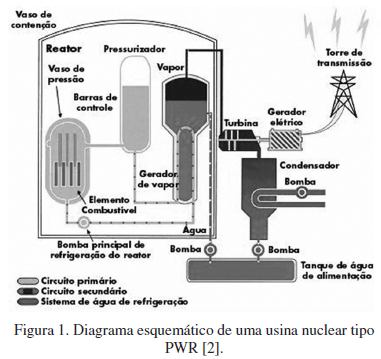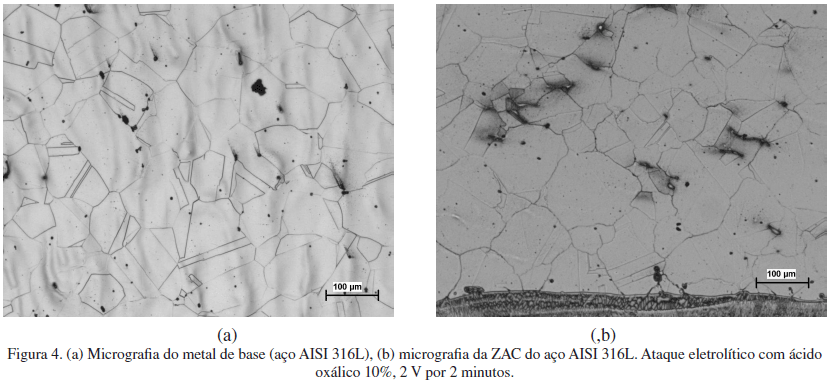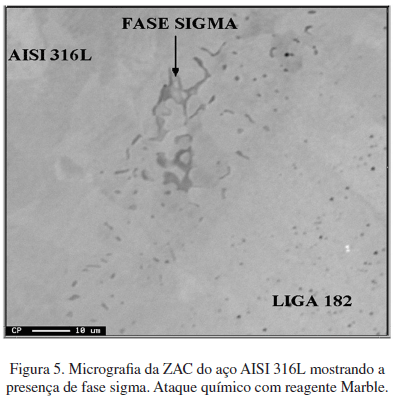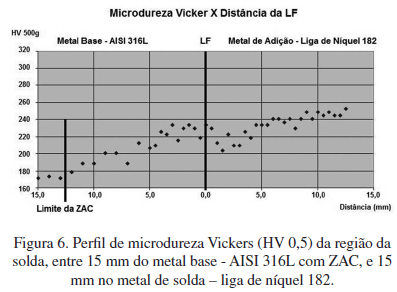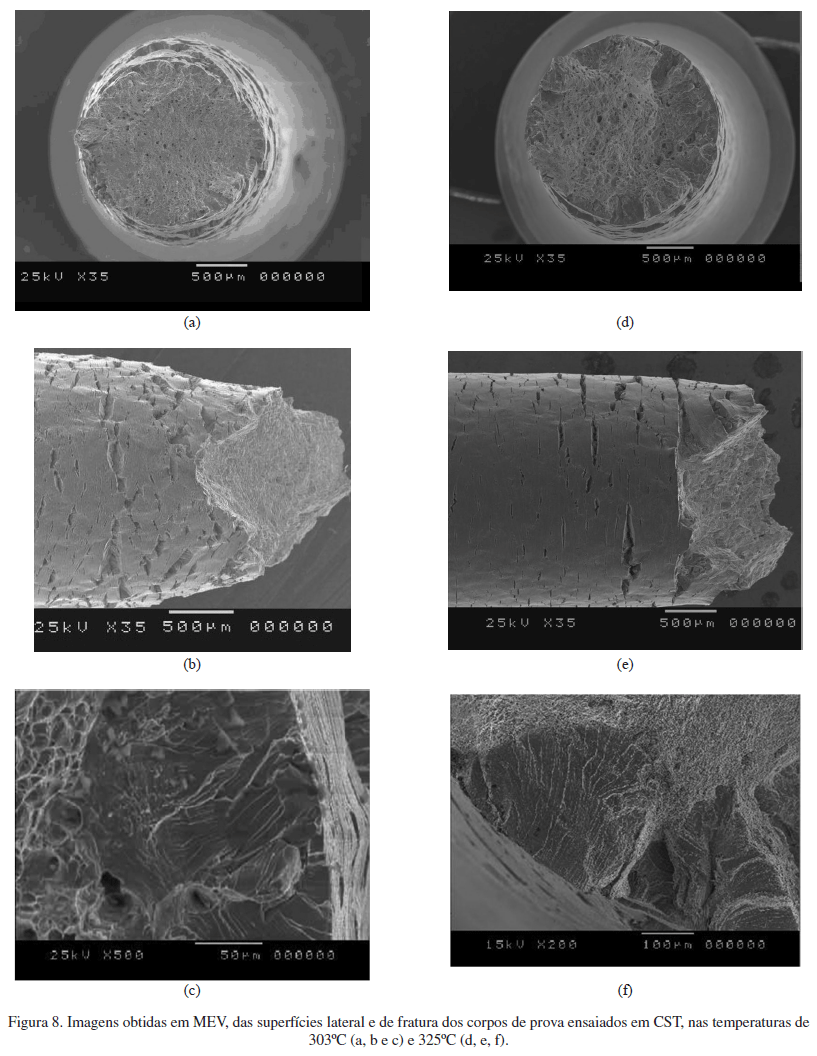In pressurized water reactors (PWRs), low alloy carbon steels and stainless steel are widely used in the primary water circuits. In most cases, Ni alloys are used to joint these materials and form dissimilar welds. These alloys are known to accommodate the differences in composition and thermal expansion of the two materials. Stress corrosion cracking of metals and alloys is caused by synergistic effects of environment, material condition and stress. Over the last thirty years, CST has been observed in dissimilar metal welds. This study presents a comparative work between the CST in the HAZ (Heat Affected Zone) of the AISI 316L in two different temperatures (303ºC and 325ºC). The susceptibility to stress corrosion cracking was assessed using the slow strain rate tensile (SSRT) test. The results of the SSRT tests indicated that CST is a thermally-activated mechanism and that brittle fracture caused by the corrosion process was observed at 325ºC.
Ferritic steel; Austenitic stainless steel; Heat Affected Zone; Stress corrosion cracking resistance; PWR reactor

